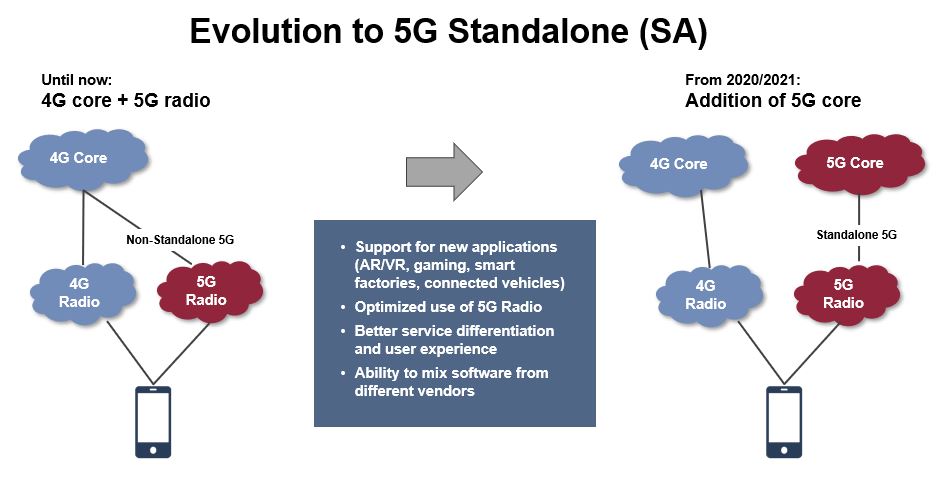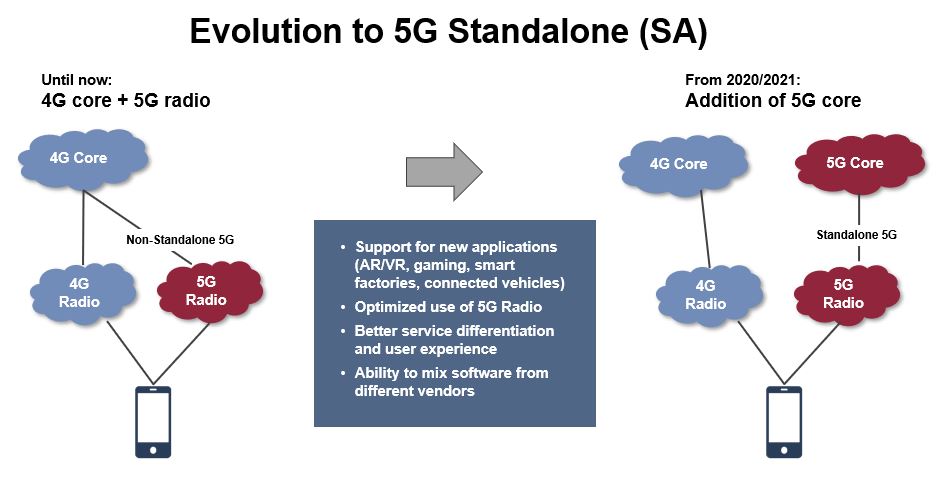5G SA: The Network we all Deserve!
In some European countries, the user experience on the 5G Non-Standalone (5G NSA) is less than optimal. While the bandwidth is nice (I have seen 1.1Gbit/s in COVID-19 devastated areas, now it is more in the 300Mbit/s range), the felt-like delay is annoying. A recent analysis indicates the reason being a combination of NSA signaling overhead in the LTE core, gating of each IP connection plus TCP’s limitations to deal with fast fluctuations in bandwidth and roundtrip time.
Clearly, NSA is only an interim step. In addition to new use cases, markets and user groups, the bread-and-butter mobile broadband use case would benefit from Standalone, too. Operators, please move! We vendors have completed all you need for 5G SA, even for the user plane.
Though, even during COVID-19 times, certain achievements are worth mentioning: NSA has benefits, at least when visiting neighboring countries: subscribers are able to use the New Radio (NR) already today (personally tested in Austria!).
Figure 1. Evolution to 5G Standalone (SA)
5G has only just begun, which also means that the race to adopt 5G is on — as technological advances are way too transformational, especially since many countries in Asia and Middle East are rushing towards 5G SA Core and have left Europe and the US far behind. This eventually would not just have a major economic impact for the future but also create challenges in terms of coherent consumer experience.
Many of the spectrum auctions in the developed countries have been delayed which has put 5G rollout plans on hold. In Europe, network operators’ investment spending over the next two years may fall by €6bn-€9bn and rollout of 5G mobile networks may be delayed by 12 to 18 months. The latest outcry on this has been by the European Commission, expressing sharp concerns that EU nations are failing to meet ‘legally-binding’ deadlines, thereby, further delaying the bloc’s development of next-generation telecommunications networks.
The COVID-19 pandemic has had little adverse impact on telecommunication service providers. But overall, this transformational change is needed by all the subscribers in dire need of communication capacity. PwC in its recent research has noted: with a surge in home-working and digitization, communication capacity and quality requirements have increased, making telcos even more critical to our economy and society.
We would all benefit from technology as transformational as 5G, whose flagship features such as network slicing, ultra-reliable communication, or 5G home internet – enable a brand new user experience and open endless business models across industries. Now is the time that a carefully considered response from operators, suppliers and regulators is needed to respond to the slowness, if at all, to COVID-19 impact.
Additionally, it is in the interest of operators to better control dominant 5G vendors and leverage openness through a multi-vendor ecosystem that would not just give the opportunity of having best-of-breed technologies but also save money and time.
There has never been a better time than now for network operators to fast-track their investments in 5G and get a number of benefits:
- Embrace a multi-vendor ecosystem through having a best-in-breed technologies to accelerate your service development and save cost and time
- 5G core is key and within that 5G data is gold. While 5G NSA is simply 4G and is not enough for many advanced 5G use-cases
- Effective transition from 4G and 5G matters. 5G SBA has a complex architecture, including many network functions. So, for operators to continue to operate alongside legacy 4G architecture, interworking between 4G and 5G has to be addressed from the beginning
- Lastly, as an operator disrupt or be disrupted: Consumers are ready for 5G Core (not 5G NSA), so fast-track your 5G investments before the competitions leaves you behind
That is why both operators and subscribers deserve a 5G SA network.






